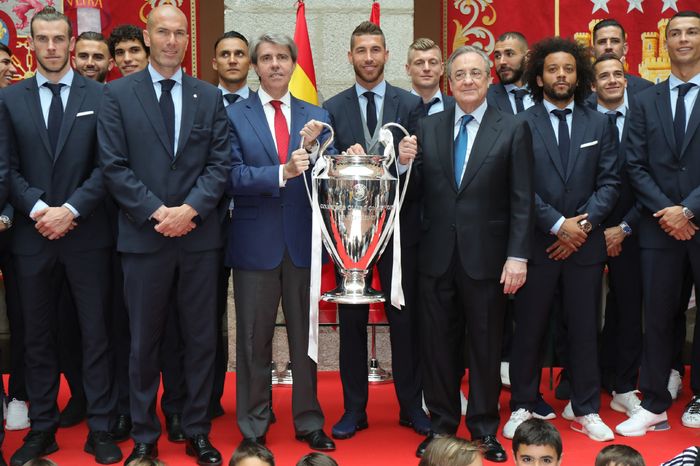European Super League: A death knell for smaller top-flight clubs
Following the renewed conversation about the structure of European football, Edward Cator analyses what it could mean for the world outside elite football.

The general idea of creating a European Super League has been mooted on and off since the 1980s. Visions of its exact structuring and membership have varied from one discussion to the next, and the closest thing currently in existence is the UEFA Champions League, featuring 32 teams in a combined group-stage and knockout format and running every season from October to May. Debate surrounding the possible Super League hotted up in 2018 when German newspaper Der Spiegel uncovered documents outlining the possibility of 16 teams breaking away from UEFA (the governing body of European club football) and forming a new tournament, with 11 ‘founding member’ clubs immune from relegation and 5 other teams promoting from and relegating to a second division.
Relationships between this proposed competition, the existing Champions League, and respective domestic leagues such as the Premier League and Bundesliga were not detailed, but if Super League clubs were to leave either of these competitions it could well have a twofold catastrophic effect on smaller top-flight clubs. Firstly, and unsurprisingly, the key motivating factor for the clubs interested in the Super League is the potential for increased television revenue, capitalising on big-name clashes such as Manchester City vs Real Madrid and Barcelona vs Bayern Munich: clubs that are ‘big enough’ to receive an invitation to the league would be able to tap into more extensive cash reserves, improving their buying power at the expense of other teams. As Murad Ahmed writes, “A breakaway that does not depend on qualification via a domestic league would create an unbreachable chasm between the biggest teams and the rest of the game.”
“The gulf between the many and the few has never been larger, and unfortunately it seems likely that the situation is only going to get worse.”
However, this would also have the effect of depriving smaller teams of their own revenue: as thrilling an encounter as Brighton & Hove Albion vs Fulham may be, Premier League viewing figures would slump if the top five or six clubs were to abscond. Similarly, clubs from smaller leagues such as Austria’s FC Salzburg and Switzerland’s BSC Young Boys would miss out on the opportunity to face the biggest sides if those teams were to leave the Champions League. Even if the Super League somehow found a way to co-exist with both the Champions League and domestic leagues, top clubs’ priorities would necessarily shift. Why would Manchester United bother to field a first XI in an FA Cup tie if the megabucks attached to Super League silverware was up for grabs?
So, where does the Super League stand today? Support for the proposed competition has remained from several of European football’s largest club owners, most notably Real Madrid’s Florentino Pérez. Faced with a renewed threat to its authority, the Champions League has responded by proposing a new 36-team format, structured as a league rather than a group stage and adding yet more fixtures to the already congested calendars of competing clubs. This would bring the Champions League closer to the proposed configuration of the Super League, in a move calculated to quieten dissenting voices within UEFA.
The FA are one of ten football associations lobbying against these changes, arguing that the combination of additional Champions League revenue and player burnout will severely weaken domestic cup competitions. The Premier League itself has also been shaken by the prospect of a Super League, with some top clubs last year suggesting reducing the league to 18 teams and removing the League Cup, apparently to make space for potential Super League fixtures.
The gulf between the many and the few has never been larger, and unfortunately it seems likely that the situation is only going to get worse. As private equity and hedge fund investors are attracted to the multi-billion-dollar business of club football, pressure is increasing on teams and governing bodies alike to squeeze out every penny of possible revenue; meanwhile, the clubs not backed by oil sheiks, Russian oligarchs or American businessmen are left fighting for the scraps.
Will we ever see a European Super League? An open letter signed by fans of some 139 clubs across Europe was issued in February of this year, strongly condemning an idea that would “destroy the European model of sport.” At the same time, the Covid-19 pandemic has led to even the biggest clubs taking significant financial losses (Barcelona made a pre-tax net loss of €100m last year) and has increased investors’ demands for new avenues of income. Unfortunately, even if the Super League never comes to pass, the fear of its spectre is still indirectly bringing about changes in domestic and European club competitions that look set to impact smaller clubs. Ultimately, it is they who will lose out, along with fans of the strong competition and fierce local rivalry that provide the soul of domestic sport across Europe.
 Comment / Cambridge’s tourism risks commodifying students18 April 2025
Comment / Cambridge’s tourism risks commodifying students18 April 2025 News / Cambridge student numbers fall amid nationwide decline14 April 2025
News / Cambridge student numbers fall amid nationwide decline14 April 2025 News / Greenwich House occupiers miss deadline to respond to University legal action15 April 2025
News / Greenwich House occupiers miss deadline to respond to University legal action15 April 2025 Comment / The Cambridge workload prioritises quantity over quality 16 April 2025
Comment / The Cambridge workload prioritises quantity over quality 16 April 2025 Sport / Cambridge celebrate clean sweep at Boat Race 202514 April 2025
Sport / Cambridge celebrate clean sweep at Boat Race 202514 April 2025





